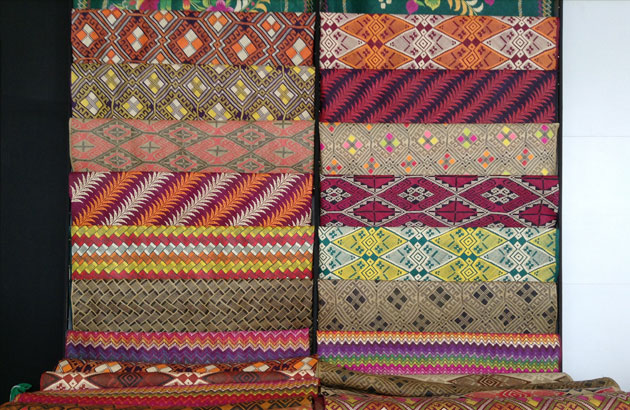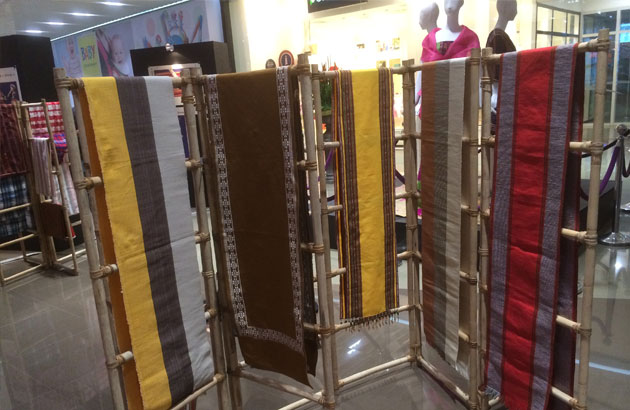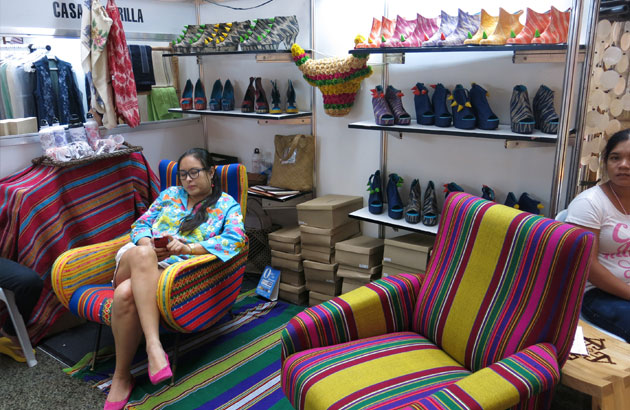A case for revival: Textiles and the Likhang Habi Market Fair
The recent era has not been kind to our textile traditions. The industry’s downfall may have been largely due to uncontrollable forces in the textile industry worldwide — think of the cheap, fast fashion sourced in mass-produced fabrics from China — but the fact is whole communities have continued to suffer poverty while watching their cultural traditions fade.
There were many external forces at work, but the greatest problem has been the apparent incompatibility of the craft to modern times.
“Modernization has focused on speed and convenience for doing everything,” says Habi Chair Maria Isabel G. Ongpin in their 2013 publication.

Habi’s research pinpointed the factors that contributed to the industry’s struggle: lack of materials, disinterest in the tradition by younger generations, and a need for contemporary designs.
Habi, the Philippine Textile Council that became an independent organization of its own since its 2009 partnership with the Museum Foundation of the Philippines, centers its mission on sustaining traditional textiles through research and education.
Ongpin notes that “weaving becomes relegated to something quaint because it is time-consuming.” She points out that “our weaving communities are in rural areas where poverty is still endemic,” meaning there are very real repercussions for letting the tradition die.

Weaving in the Philippines has a history that goes back to prehistory. It has a meagre existence in today’s world, where the majority of our textile products are made or sourced abroad, and where the communities that continue to struggle through their hand-weaving traditions live far away. Once upon a time there was a very real, thriving Philippine textile industry, but one that has since been whittled down to scattered and remote locations, forced into a struggle at the margins. A bleak picture for a craft that is largely about the celebration and preservation of life.
It’s complicated (though enriched) by the variety of traditions existent in the country. Being an archipelago of so many cultures has never made it easy, and it’s no different in the fight for textiles to survive. The needs of the weavers of the Cordilleras, for instance, would not necessarily mirror those of the traditions in Maguindanao. But Habi has continued to labor through its mission, building a network of individuals committed to keeping the tradition alive — and priming a place for it in the future.
Now on its fourth year, the Likhang Habi Market Fair was designed to bring members of the industry, from Luzon to Mindanao, together with the buying public. Those interested in the cultural tradition will have the chance to interact with the people directly in contact with the weaving tradition. Weavers, suppliers and designers alike will be around, showing the fruits of their work as helped by Habi.

Moreover, word has gone around that the products have seen steady improvement every year, with some exciting implications for the industry as a whole. Apart from contemporary designs out of tnalak, hablon abaca and others, experiments with textile blends like piña-cotton and piña-silk are bearing fruit, and are gearing toward (hopefully) setting up a model for 100 percent Philippine-made products—including the source for the cotton and the silk.
“Handmade goods are now being looked at with more respect,” says Ongpin, referring to the shift in attitude towards factory made products in the market. Handmade products, she says, “are not meant to replace them,” but to be visible and available. Habi firmly believes, in Ongpin’s words, that “if weaving is given due respect it can exist with modernity by enhancing it, endowing it with a unique identity of past and present.” That weaving is largely about the story of life is not lost on Habi; it just makes it all the more worth renewing.

[The Likhang Habi Market Fair will run from October 24-26, from 10 a.m. to 10 p.m., at the Glorietta Activity Center in Makati.]



















